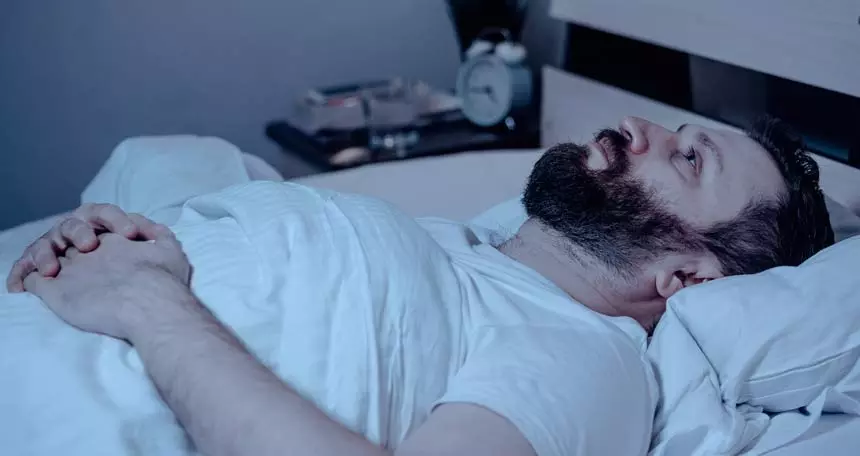Getting Residential Services for Mental Illness
People dealing with mental health issues have access to a variety of treatment options, one of which is inpatient care at a behavioral health facility. Admittance to one of these organizations, or even a hospital (often with a separate mental health department) for the duration of one’s therapy, is known as inpatient mental health treatment.
At Catalina, our Joint Commission-accredited residential mental health programs offer an accommodating setting for recovery from a range of mental health concerns.
Keep reading to find out why Catalina Behavioral Health leads the way in providing accessible mental health treatment for Arizona and beyond!
The Evolution of Inpatient Mental Health Treatment
Institutions for mental health care now serve a very different role than they did fifty years ago. The original purpose of psychiatric institutions was to isolate and segregate persons with mental illness from society.
The goal of any contemporary mental health organization is to improve patients’ mental health by providing them with a secure, therapeutic setting that helps ease a return to daily health and functional well being.
Our modern inpatient treatment program is based in Tucson and aims to rehabilitate those with mental illness and related mental health challenges so that they can return to and thrive in society.
Mental Health Rehab Hotline – Get Help Now
Who Should Seek Inpatient Mental Health Treatment?
When someone needs to be stabilized, inpatient treatment facilities for mental health are available to help. Physical illnesses, including cancer, as well as mental health issues like schizophrenia, bipolar disorder, severe depression, schizoaffective disorder, and post-traumatic stress disorder (PTSD) can all feature relapse. Acute mental disorders commonly require some form of hospitalization.
All of our programs at Catalina Behavioral Health use a trauma-informed approach, whether to mental health or addiction treatment, to better help clients address underlying causes and achieve more successful outcomes.
When it comes to mental health care, hospitalization is just one option among several. It’s a final option when previous treatments for mental health have failed to provide positive results. Patients often admitted to inpatient treatment centers suffer from a co-occurring disorder. These are a combination of mental health or mood disorders diagnosed with substance abuse issues.
Inpatient mental health treatment is also required when suicide or ideations of self-harm are a part of the equation. Those suffering from these challenges are often routed to hospitals first, then inpatient treatment.
At Catalina, our programs welcome residential treatment clients from Phoenix, Scottsdale, Flagstaff, and across Arizona.
Inpatient Treatment for Mental Health Disorders

The goal of inpatient treatment is to restore patients to mental health and stability, where clients may resume their daily lives and achieve their goals without constant medical supervision. This is achieved through a variety of therapies aimed at alleviating pain and improving emotional well-being:
- One-on-one sessions with a mental health professional or several mental health professionals
- Family therapy and other activities have proven effective for a specific mental health disorder. This includes journaling and possibly holistic activities.
- Medication management
- Group therapy with peers who are also admitted for inpatient psychiatric care
- Support groups with all of the above included
- Clients are closely monitored for physical and mental health and then possibly transitioned to outpatient programs
Many mental health experts, such as psychiatrists, psychologists, therapists, social workers, mental health nurses, and behavioral health technicians/specialists, operate in inpatient settings to offer the aforementioned care. People who are there for a short time for intensive mental health therapy are cared for by both around the clock.
The Goals of Short Term Inpatient Treatment
A person in need of immediate treatment often has an acute mental health disorder characterized by a rapid worsening of mental health symptoms. As soon as things have visibly stabilized, the person may work on regaining or developing coping mechanisms to better handle stressful situations in the future.
Although the aims of each individual in an inpatient mental health treatment institution are unique to that patient, there are some standards that apply to all inpatients. Working together, the medical staff helps each client:
- Maintain stable mental, emotional, and behavioral habits
- Find out what potentially triggered the issue to prevent future challenges
- Evaluate the efficacy of many treatments to pick the best one
- Locate and make contact with loved ones for support during and following treatment
- Improving one’s ability to deal with stress following hospitalization in everyday life
- Gain more background on various mental health conditions
- Prepare to transition by recommending third-party organizations that provide group therapy
In order to aid people in crisis and meet these aims, inpatient mental health facilities maintain a structured environment. They have a regimented routine that everyone must adhere to, including defined hours for getting up and eating and certain times for various treatments and other activities. The person in need of inpatient treatment is likely in a state of disarray; thus, a strict schedule is in place to establish a routine that will provide some peace of mind to the individual.
The Freedom to Overcome Mental Illness

Inpatient mental health treatment facilities are not prisons; they are for those who need help becoming well again, not for isolating them from the community. The objective is to get clients back into society again, to lead psychologically healthy lives.
Many different types of facilities are used to offer care and treatment for people with mental health problems. The setting and degree of care provided will be based on a number of variables, including the specifics of the individual’s mental illness, the state of their health, and the prescribed or advised course of treatment.
Residential treatment programs and outpatient care are the three most common forms of mental health treatment settings. Some services in the field of mental health treatment are also made available via the use of the Internet and other forms of electronic communication.
The Most Common Forms of Mental Health Treatment

Mental hospitalization or psychiatric ward placement in regular hospitals are examples of “hospital inpatient settings.” Either the public or private sector may own the facility (government-operated). Patients with more serious mental health issues are often sent to inpatient hospitals for treatment, where they stay for fewer than 30 days.
Someone in the acute phase of a mental disorder may require 24-hour care if admitted to an inpatient facility. After 30 days of inpatient therapy, a client who needs long-term care is often moved to another institution or a different environment within the same mental hospital.
Although medical care is offered, psychiatric facilities focus only on treating mental health issues. Some mental health facilities offer detoxification and inpatient alcohol abuse and substance use therapy, allowing for extended periods of recovery.
In addition to general psychiatric care, facilities such as ours at Catalina also offer specialized care for people with specific conditions, such as inpatient EMDR therapy for trauma clients, and support those suffering from eating disorders, geriatric issues, children and adolescents’ mental health challenges.
Although uncommon, mental inpatient facilities and/or drug misuse units can be found in general medical and surgical institutions. Unlike a traditional psychiatric facility, they provide treatment options that might otherwise be unavailable.
Licensed Dual Diagnosis Treatment
What are the Different Inpatient Rehab Settings?
Residential treatment centers for mental health typically offer more extensive care for patients. Though similar to an inpatient hospital in terms of medical care, most residential treatment facilities are intended to be homier and less clinical in the atmosphere. Examples:
Psychiatric Residential
Individuals who are unable to operate freely due to a mental health condition, such as schizophrenia, borderline personality disorder, bipolar illness, or a dual diagnosis (mental health diagnosis plus substance misuse problems), are the target population for psychiatric residential institutions.
Substance Use and Alcohol Treatment

Rehab centers for alcohol and drugs are hospitals where addicts can stay for treatment and, in certain cases, undergo detoxification.
Clients normally stay at these facilities for 30 days, however, this number might vary depending on the particulars of each location’s policy.
What’s the Difference Between a Residential Treatment Center and an Inpatient Mental Health Facility?
Inpatient mental health facilities sometimes take the form of residential treatment programs.
The excellent quality of care provided by hospitals during overnight stays is typically not sustainable beyond a few days. You may require ongoing inpatient care even after a one- or two-week stay in a psychiatric facility.
Residential treatment centers provide less intensive care than those found in hospitals. They provide round-the-clock access to counselors and other medical specialists who operate in mental health care for patients.
A residential treatment center will provide a more “home-like” atmosphere than a traditional hospital would for mental patients.
During your stay in an inpatient hospital, you may be sent to a residential treatment center to continue your mental health or drug addiction therapy. Your mental hospital may also suggest rigorous outpatient or partial hospitalization programs.
What Happens During a Mental Breakdown?

A mental breakdown is a sign of mental health distress and can manifest in many ways.
It’s possible that you’re suffering a mental breakdown if your mental health is preventing you from carrying on with your normal life. This might be a time when you feel as though you have no control over your life and that everything is too much. Someone you care about may suddenly seem “different” to you.
While explaining mental health and trauma to someone who is not familiar is often difficult, try and see how far from a baseline level of health you feel, and reach out for help from a person (or organization such as Catalina) who is qualified to provide care.
The following symptoms may indicate that you or someone you care about is experiencing emotional distress that might lead to a mental breakdown:
- Lack of sleep or excessive sleep
- Gaining or losing a lot of weight suddenly
- Distancing oneself from others and avoiding participation in regular activities and work
- No energy
- Symptoms of discomfort that cannot be explained, such as frequent headaches or stomachaches
- A sense of hopelessness and helplessness
- Anxiety and excess stress, self-doubt, and guilt complexes
- Increased use of tobacco products, electronic cigarettes, or caffeine
- Substance abuse, such as drinking excessively or using drugs
- Abuse of prescribed medications
The following signs may be present in younger people experiencing a mental breakdown:
- Instances of Aggression
- Isolation
- Issues with Academic Performance, Attendance, or Behavior
- Negative choices, such as indulging in substance abuse, driving while impaired, or engaging in sexual promiscuity
- Traumatic self-injury, such as cutting
Inpatient Mental Health Rehab – Get Help Now
Long Term Recovery Is Possible at Catalina Behavioral Health
At Catalina Behavioral Health, we understand how life-altering mental health disorders can be. If you or someone you love is suffering from a serious mental illness, including depression, anxiety, OCD, PTSD, and other mental health disorders, we offer treatment programs and additional resources, including medication and nutrition therapy to assist on the road to recovery.
Getting residential mental health treatment paid for by insurance is often possible, and Catalina can help you find out the exact details of coverage, and costs of attending treatment (if any apply) within minutes when you call for support.
Our treatment methods assist in recovery from mental and behavioral health challenges, ensuring that you can return to a normal quality of life. For more information on how we can provide assistance, contact a member of our admissions team today!





